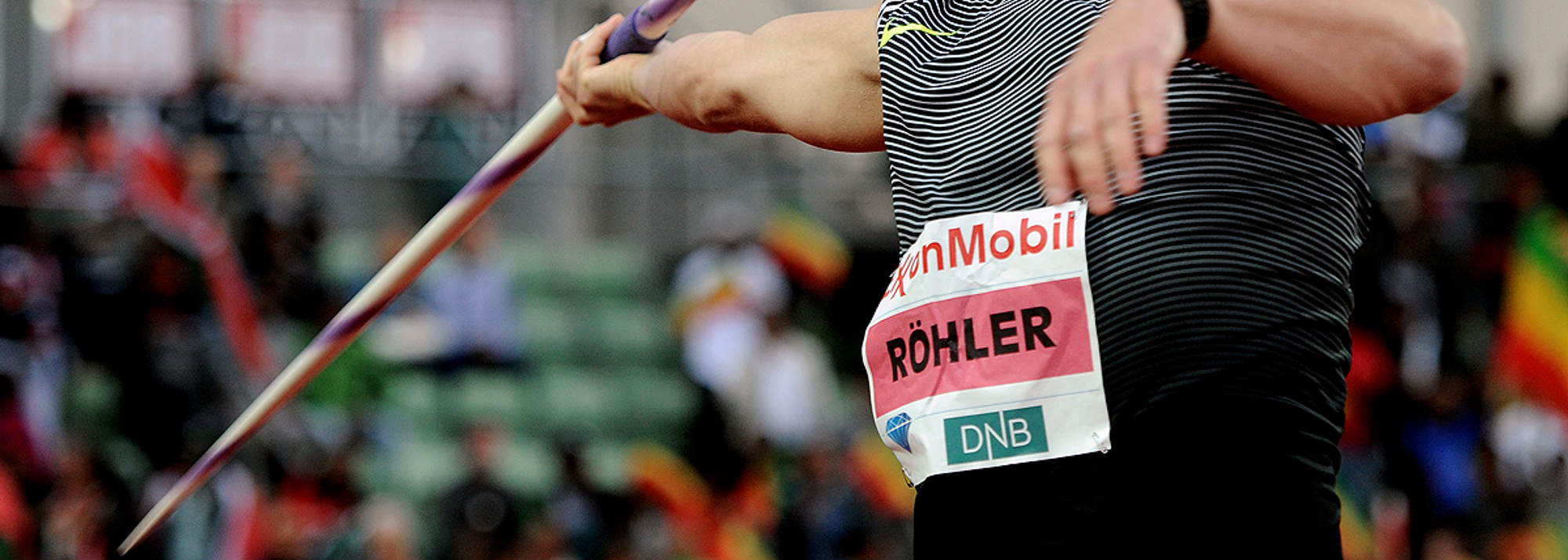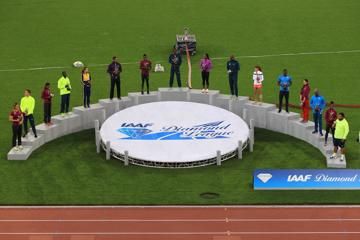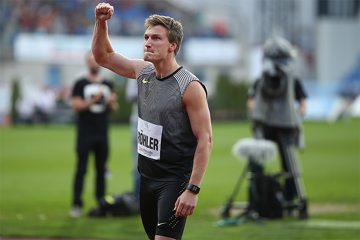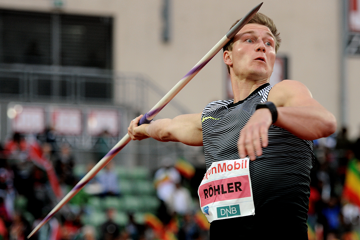Thomas Rohler, winner of the javelin at the IAAF Diamond League meeting in Oslo (© Mark Shearman)
Thomas Rohler continued his impressive 2016 campaign at the IAAF Diamond League meeting in Oslo last Thursday (9), the famous ExxonMobil Bislett Games, when he notched up his fourth win in five starts.
Into the bargain, the German javelin thrower extended his place on top of the 2016 world list and his winning effort of 89.30m added three centimetres to his personal best, solidifying his position as the 15th farthest javelin thrower of all time.
All things considered, it was not bad for a chilly and damp night’s work.
“Usually I have an immediate feeling on how good (a throw) is, if it’s maybe good enough to get into the lead,” he said.
“I thought that it was better than the leading throw, but I didn’t realise that it was a PR throw. It went from right to left and back to right in three curves, we didn’t have the best wind for javelin that evening so I didn’t expect it to be 89 (metres). I expected it to be high 87 or something.”
Rohler arrived in the Norwegian capital on the heels of an 87.91m throw from a meeting in his hometown of Jena five days earlier, the third time in four meetings that he had extended his season’s best.
His performance in Oslo underscored the consistency he and coach Harro Schwuchow have been working towards.
“We are very pleased with how preparations went this year, and we are where we wanted to be,” said Rohler, whose win at Bislett was his second in IAAF Diamond League competition this season, after also triumphing in Shanghai last month.
“We’re in a good position on our road to the bigger competitions coming up, the European Championships and Rio later. People are saying, ‘You’re in really good shape, but is it maybe too early?’ But that’s how we planned it and hopefully we’re going to continue like this.”
Passionate about throwing
He began paving the foundation for treading that road to Rio back in 2009, at the age of 18, when he made a permanent switch to the javelin from the triple jump.
“The main factor I see now is that it (the javelin) was much more fun for me,” he said. “It was the thing I had the passion for. I always liked throwing things when I was young.
“Then when it was time to specialise, in high school, I had to go to jumping because I was too small for throwing. I wasn’t a fast developer in my younger years so I did a lot of high jumping and triple jumping. Then the jumps coach left Jena and I saw that as an opportunity to go back to what I loved to do, so that’s what I did.”
Signs that his decision was the right one came quickly.
The following year he made the German team for the 2010 IAAF U20 World Championships, where he finished ninth.
As a career-defining turning point, he said, qualifying for that Moncton-bound squad was “pretty important”.
“To be picked for the 2010 national junior team, that was when I first really noted that I’m truly doing something that not everybody could do in the sport.”
He was still a teenager when he broke the 80-metre barrier in 2012, had his first senior World Championships experience in 2013 and won the European U23 title, then produced a breakout campaign in 2014, his first full international season, which he capped by lifting the Diamond Trophy.
“Winning the Diamond Race in 2014 was another motivating step for me, saying ‘now you’re ready, people consider you are world class’.”
90 metres beckons
He improved to 87.63m that year at the IAAF Diamond League final in Zurich, and to the doorstep of the still-formidable 90-metre barrier last year in Kuortane, Finland, where he reached 89.27m.
An added bonus of his Oslo performance last week was that he set his most recent career best with one of Andreas Thorkildsen’s javelins on a night that Norway’s recently-retired two-time Olympic champion was honoured during an on-field ceremony.
“I was not allowed to travel with my javelins because I was in a pretty small plane on the flight from Leipzig to Frankfurt,” said Rohler. “I often have that problem.”
Through some quick networking, Thorkildsen learned of Rohler’s situation and was happy to oblige.
“We both know from each other that we both like the same kind of javelin so that was a really fantastic situation.”
So, was he disappointed Oslo didn’t witness his entry into the event’s 90-metre club?
“No, no, no,” he said. “I’ve always said that I’m not going to chase records, I’m never going to chase 90 metres. It will come one day. It will need to come one day this season I guess because everyone will continue developing. I know that other throwers are really competitive in important seasons; that’s the same thing I’m going to do, just keep developing. There will be that one day that I will get that 90 metres.”
Rohler unleashed his big throw in the second round, allowing him the luxury to experiment technically during the heat of competition.
“I was trying some things after the 89, which was already in the second round so I had some time to try out some things. They didn’t work out but I had 85-metre throws which I felt were like 79-metre throws. So I have the feeling that there is more to come.”
When?
He made no predictions but his most immediate options include the IAAF Diamond League meeting in Stockholm this Thursday (16), the German Championships in Kassel on Saturday (18), followed by competitions in the Finnish cities of Kuortane and Turku, his last tests prior to the European Championships, which begin in Amsterdam on 6 July.
Bob Ramsak for the IAAF








